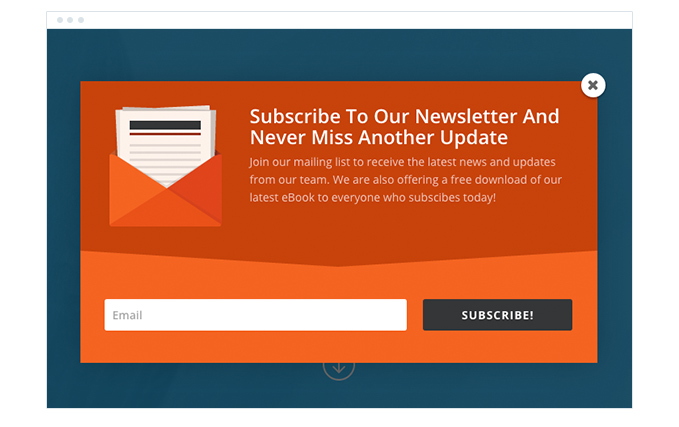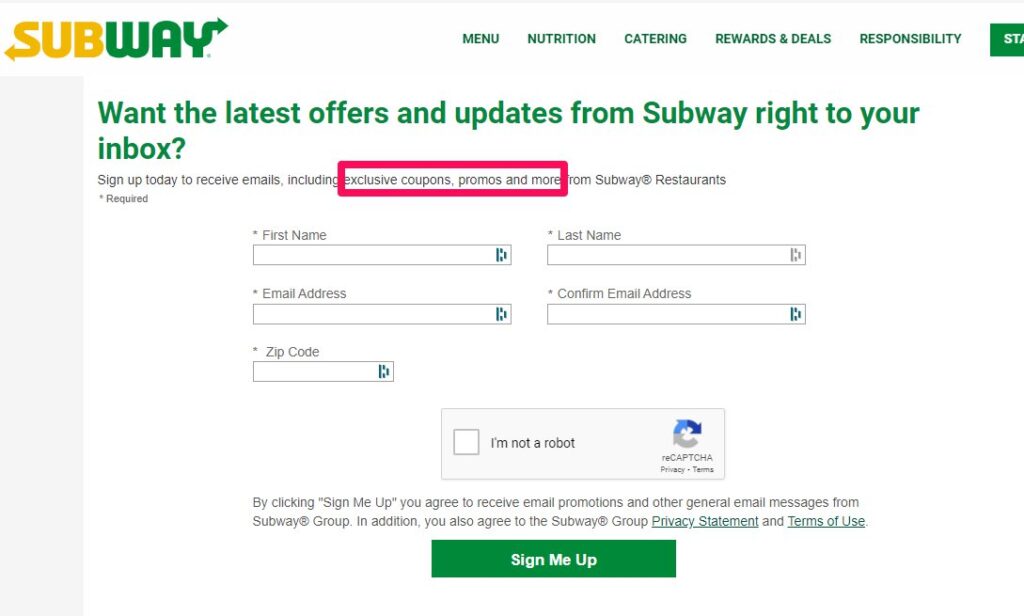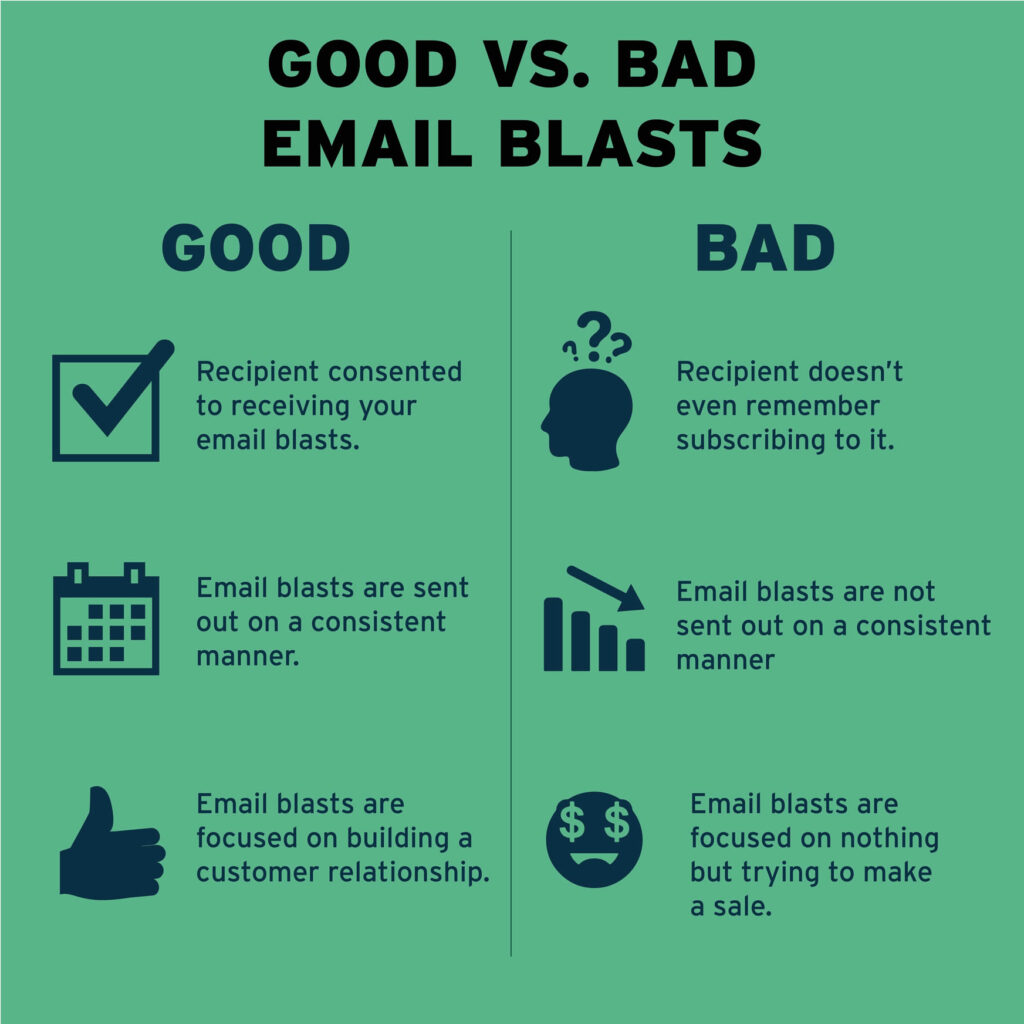We are living in a time where social media, video, artificial intelligence, and other major technological advances are keeping businesses going. With being said, is email marketing still a viable choice for small businesses?
The answer is yes!
Email marketing is nowhere near dead, and many major companies still use it as a part of their own marketing strategy. Take a look at Best Buy, Office Depot, Taco Bell, and Walgreens as examples.
According to this article from Smart Insights, email marketing is considered the most effective marketing channel beating out all other forms of digital marketing (such as SEO, social media marketing, Google ads, etc.).
Why? Because email is a widely used platform and nearly everyone has it!
Before you can start email marketing, you have to build a mailing list!
One of the biggest advantages of email marketing is that you own the connections it brings you, and you can have direct contact with them! The first step towards building your mailing list is implementing a subscription form within your website.

The best way to get subscribers is to offer them a freebie just for subscribing. Take a look at this sample: notice how it says “We are offering a free download of our latest eBook to everyone who subscribes today!”
Simply saying “subscribe to our newsletter” doesn’t sound exciting at all, does it? Consider offering freebies such as coupons, free downloads OR you can have your subscribers automatically enter a contest for something fun (tote bags, gift cards, etc.)!

Creating excitement or simply being upfront about what your subscribers are expecting from your emails is key to getting your subscriber list to grow. Take a look at the example above from Subway. Notice the text that has the pink square around it? It explains exactly what subscribers to Subway’s newsletter can expect to receive.
Remember your forms should contain headlines or captions that answer the question “What’s in it for my subscribers? Why should they subscribe to my newsletters or email blasts?”
Also ensure that you are following all laws and regulations related to email marketing, such as CAN-SPAM and GDPR regulations. And NEVER buy email lists, EVER! Being realistic, remember that everyone must come and go at some point so make it easy for people to unsubscribe from your emails should they wish to opt out.
Send out emails that are awesome in every way!

Always make sure that your subscribers receive a welcome email, as this confirms that they have subscribed to your newsletters. Need a great example of a welcome email? Take a look at the example above from Kate Spade.
Notice that it is upfront about what subscribers should expect to receive, but it also includes quick links to different sections of their website AND also makes notes about certain incentives shoppers should be aware of such as free shipping and returns. A call-to-action is also included right below a coupon code to encourage the subscriber to make an immediate purchase.
Most importantly, this welcome email contains social media links at the bottom! Why not try to increase both your follower and subscriber count at the same time, right?
Avoid being “salesy” in your first set of emails! Email marketing is not all about just trying to land a sale!

Always remember that the number one priority of email marketing is to build a personal relationship with your followers, not solely on making sales!
Your first set of emails should be focused on what you want to offer to your subscribers. Remember what your headlines and captions promised your subscribers? Make sure your emails deliver exactly those things!
You can utilize your email blasts to help gain consumer trust by using them to showcase your credentials. How? This is where content marketing meets email marketing. Embed your videos, share your blog posts, or simply include useful tips related to using your products. If your emails do not contain any of the things your subscribers expected or just look focused on making a sale, then you can expect your new subscribers to promptly click that unsubscribe button (bad news, more on that later)!
Remember, consistency is key so you will want to make sure that your emails are being delivered in a timely manner. Be upfront on your subscription form on how many times your subscribers can expect to receive your emails and deliver on that promise!
Automation in Email Marketing
One of the most important things to remember about email marketing is never to send out the emails yourself. Utilize email automation, which is the process of scheduling emails to be sent at a certain time; all email marketing platforms revolve around automation and have builders that will allow you to create beautiful, eye-catching designs. Don’t ever use boring text-only emails! You do not need to know how to write HTML code to build a beautiful email; all platforms allow you to build them visually just by clicking with your mouse!
Here at Creativity Design Group, we use Direct Mail for Mac as our platform. If you opened this blog post from one of our email blasts, that blast was made on Direct Mail.
Email Marketing Analytics

Every email marketing platform will give you analytics, or data related to the emails you send out. You will want to pay close attention to this information because they will help you decide what route you need to take if your emails are not engaging your users. Let’s go over them.
Open Rate
The open rate is basically the number of people who open your emails. If your open rate is low, then you need to focus on providing better value to your subscribers. Further reading on this can be found on marketing expert Neil Patel’s website.
Click-Through Rate (CTR)
The click-through rate (or CTR for short) is simply how many people clicked on any link within your emails. If your CTR is low, it means the message in your email failed to make a point to your readers. You can fix this by tweaking your emails’ body copy to be more engaging, such as by using more enticing/exciting wording or by providing more interesting content.
Unsubscribe Rate
The unsubscribe rate is exactly what it says it is: how many people have decided to remove their email addresses from your mailing list. Out of all three of these analytics, this is one is probably the most important one to focus on. Let’s go over some quick tips on how to analyze and study your unsubscribe rates.
- If people are unsubscribing from your emails over time, re-examine your emails to see what may be causing people to opt out of them. Did your emails fail to interest your reader in any way? Too boring perhaps?
- If people began unsubscribing more after you sent out a certain email, review said email and see why it may be problematic. Every email blast is unique, so this step will depend on what you wrote in the email in question. Ensure that your content is informative, interesting, exciting, and of course, delivers on the promise you initially gave to your subscribers. We cannot stress that enough!
- If people are unsubscribing very quickly after they initially subscribed, this means that your emails are failing to deliver what was promised to your subscribers. This will require some hard work and possibly starting over from scratch again (including obtaining brand new subscribers). Review what you are expected to deliver to your subscribers, and then make sure each email you send out aligns with every expectation. Consider making a checklist of each item subscribers are expecting, and then make sure your email meets each one of these items before sending it out.
Email Marketing Segmentation
What is email marketing segmentation, you may ask?
It is the process of splitting up your email marketing strategy by sending out emails to certain people. Ways you can do this include allowing your subscribers to choose certain types of emails they want to receive (for example one subscriber may want emails about your monthly specials, while another one may want to receive a daily newsletter).
Examples of segmentation include:
- Current customers
- Daily email list
- Demographics
- Interests
- Newsletter subscribers
Remember that some subscribers may only want to hear about certain topics, so allowing them to subscribe only to certain emails ensures they are happy. Some subscribers may want to hear about everything, while some only want to receive emails about certain things (rather than receive a mailbox full of emails they have no interest in reading).
Conclusion
We hope you have learned the basic rules of email marketing after reading this post. You may be thinking, how do I get started with all of this? First, you will need an email marketing platform such as Direct Mail (Mac only), Constant Contact, or Mailchimp. Many of these platforms offer free trials, so go ahead and give one a try. Do you need assistance getting your first email campaign started? Feel free to contact us! We are only an email away and the first consultation is FREE of charge!

